
When should teachers step in and get involved in children's play? For some teachers this isn't a concern because children's learning is determined by the set curriculum, a pathway laid out by the school and schedule. For the play based educator, who teaches in an emergent curriculum, the learning evolves around the ongoing interests of the children.
In this holistic approach,
-How do we ensure continued learning?
-How do we meet the needs of developmental milestones/outcomes?
-How do we showcase what each student has learnt?
Let me take you through a case study from a previous class of mine.
Play Based Educators are deeply engaged in the process of observing and assessing what is happening and why. We like to let children work through problems themselves with careful support from adults, peers and the environment. We also carefully consider when to step in and how.
During a project that started on trains, evolved into places in the city, a group of children became interested in building a fire truck and role playing with it. I offered a big brown box and during project time various children began painting it red. What is interesting is for some they were making a fire truck. For others they were just painting a big box, enjoying the process.


After a few days the box was completely red and the next steps were unclear. What would the students do next with this big red box? Luckily we had lots of loose parts in our classroom 'remida' (recycling area) and one student brought in a hose from his old washing machine at home. Some other children used four paper plates from the remida as the wheels. Using masking tape, clear tape, double sided tape and glue they added each item to the fire truck including the two water hoses.
Grey tube hose "this one is normal water hose"
Wooden/Cardboard hose "this is super powerful hose that can be detached"


The fire truck was built and ready to go! They went all round the classroom putting out fires. We supported by adding pictures of fires in different locations and heights around the room. The children also used the red, orange and yellow scarfs to throw around the room to make fires to fight. They also made their own tools such as extra hoses and fire extinguishers!
As you can imagine (and see from the photos) this was a popular addition to our environment. So popular it caused arguments and the play pushed the box to its limits with it being pulled, pushed and fallen on a number of times. Most of the battles were fought on who will sit inside the 2 (sometimes 3 seater) fire truck. I am using the word 'battles' and 'fought' but I want to be clear that I am taking some creative license with the language and trying to covey that children's interests, emotional and social development as well as language skills were all being utilized here. At a young age the development of these skills takes time and starts out with screaming, shouting, pulling and sometimes hitting. It is easy to feel the need to jump in, solve the problem or try to fix it. For example, "you two can play it for fifteen minutes then you need to let others play" or "if you can't play it nicely I will take it away!". For me these type of responses are not solving the underlying problem of supporting children to understand their emotions and use communication to find a solution. We stepped back and let the children work out these problems and most of the time they did. There was heated debate, which we discussed as a group at different times. There was also the occasional hitting and here we stepped in but these often sorted themselves out too.

One day during the many adventures of the of the fire truck the wheel (paper plate) broke and fell off. For the children it didn’t really make a difference. It was still perfectly functional in their play. For us (teaching team) we had a dilemma. Do we intervene and stop the play because the fir truck only has 3 "functional" wheels? Alternatively we keep the play going because maybe for the children the fire truck can fly or has an invisible wheel etc. These types of moments happen in play often and the adults need to decide whether to act or wait.
We decided to act, taking the fire truck out of the fire station and classroom. The children noticed this and asked where it had gone. We said they would "find out tomorrow". The next day during our morning meeting (circle time) I asked the students why they think I took the fire truck away. They thought it was taken because they didn’t play with it nicely, which is a lesson in itself about how children view our actions. I told them it wasn’t that. I then showed them the broken wheel and asked what happened. All they knew was it broke but couldn't remember how and I asked if a truck can work if the wheel is broken? This started a discussion about vehicles breaking with different children offering some information about their parents cars and experiences.

I then asked them what we can do or where we can go if a vehicle breaks. They didn’t know but I had a short video of a mechanic shop and a mechanic fixing a broken engine and a broken wheel. I then revealed a new area I put in the class, the garage (or mechanic shop). I demonstrated some ways we can use it. Then it was time for play! I wasn’t sure if they would be interested in fixing the fire truck or simply take it down and go back to fighting fires.

The intervention worked!
The students gathered various tools, tape and other items trying to fix it. At first they focused on fixing the tires but then found "other issues" with the fire truck like the lack of a ladder and holes in the truck etc. Ironically a typical mechanic trope, you go in with one problem and the mechanic tells you there are five more.
When we step in too much with children’s play we can interfere or stop the learning unfolding. One thing I notice in teachers new to play based learning is feeling afraid to step in and simply observing and recording. We must understand that there are many things children don’t know yet or haven’t experienced in school or outside, like mechanics. By offering some information it can take play further, deeper but also in a new direction. There is also a misconception that in play based or emergent curriculum schools children play all day and teachers don’t need to do much.
The play didn’t end here!
In a lucky twist of fate one the children was late to be picked up that week. His parents unfortunately suffered a flat tire. This accident led to some powerful learning. The parents knowing what we had being playing this in class took their son with them to the garage (mechanics) to get some real world experience. When the same child came back to school he presented his adventure to the class and told us about an important thing we should do to our fire truck.
"we need to add a spare tire"
Supporting children's play should focus on taking their ideas, their skills, their knowledge further without too much 'teachersplaining'. There are times we should look to children to be the supplier of knowledge. There are times the environment (or what we put in it) can become to supplier of knowledge. There are also times the adult (parent or teacher) can be this supplier.

Additional Note:

You can also see the attempt to write the word 'mechanic' on the spare wheel with the letters m and k.


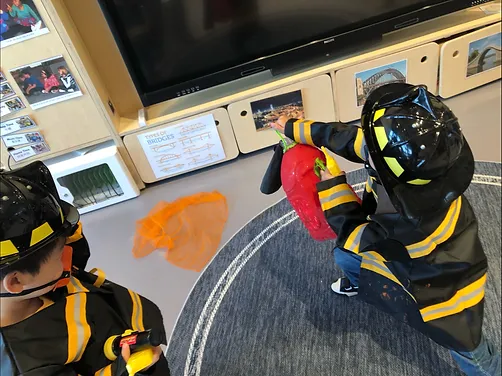
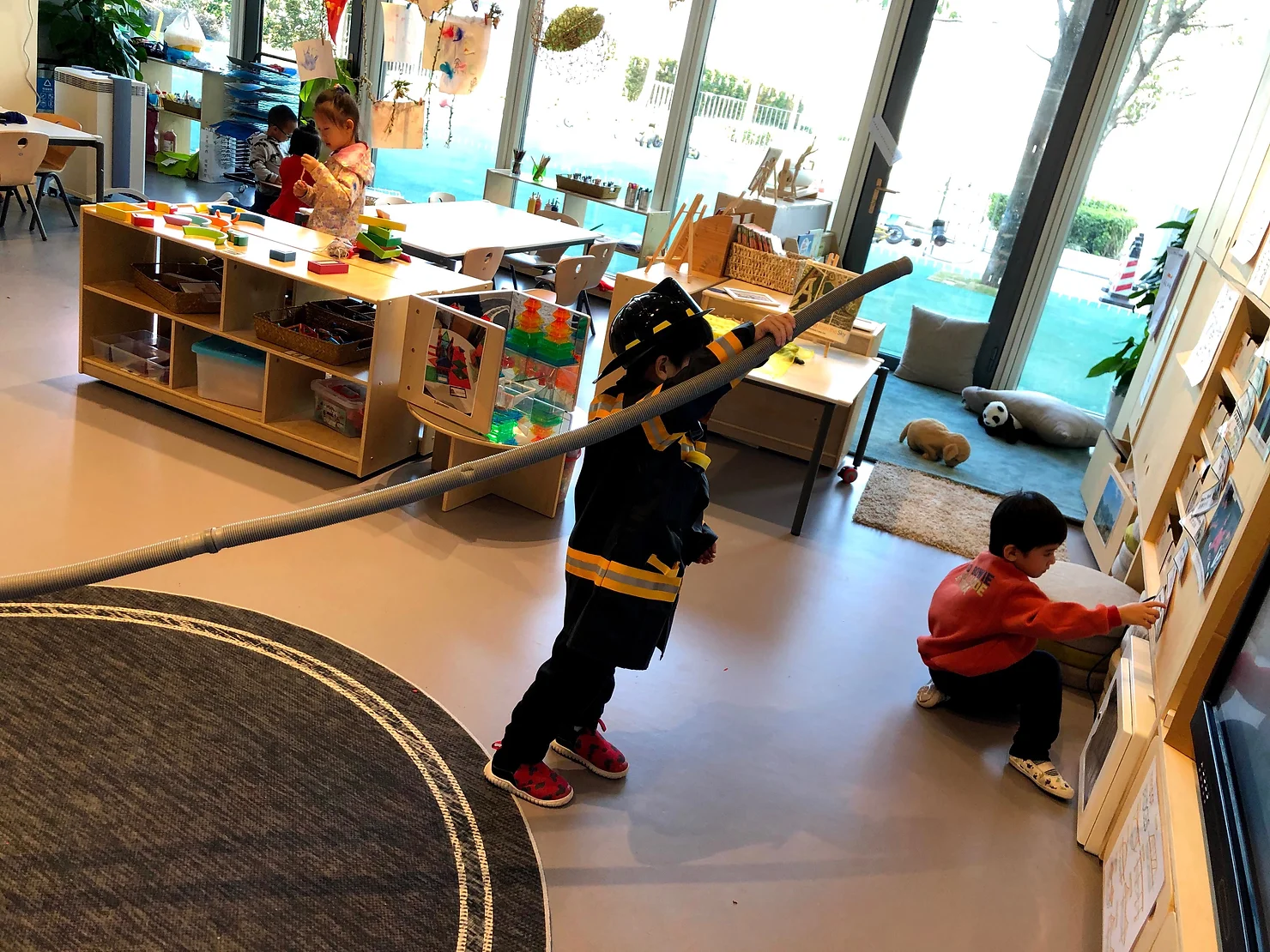


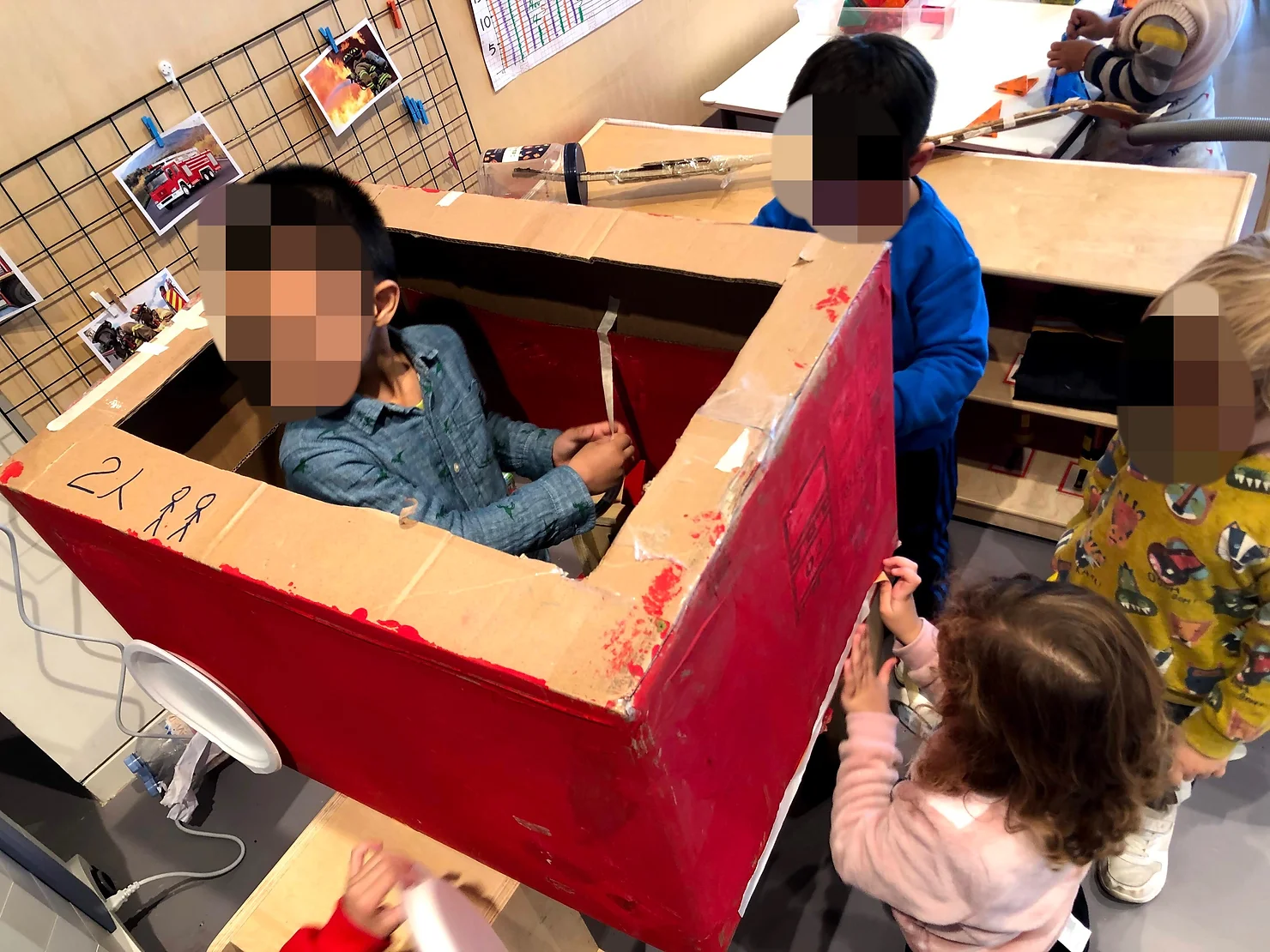
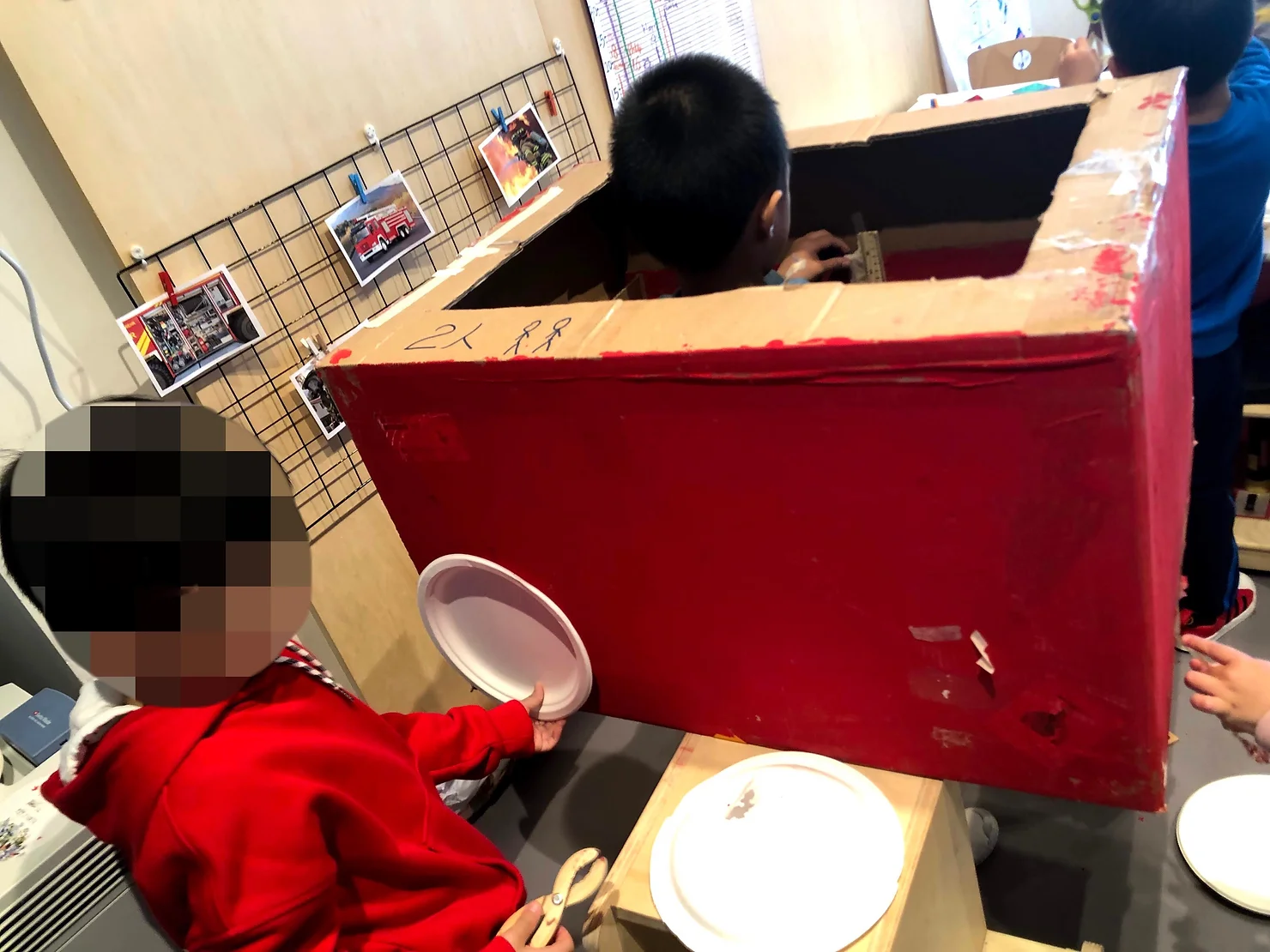



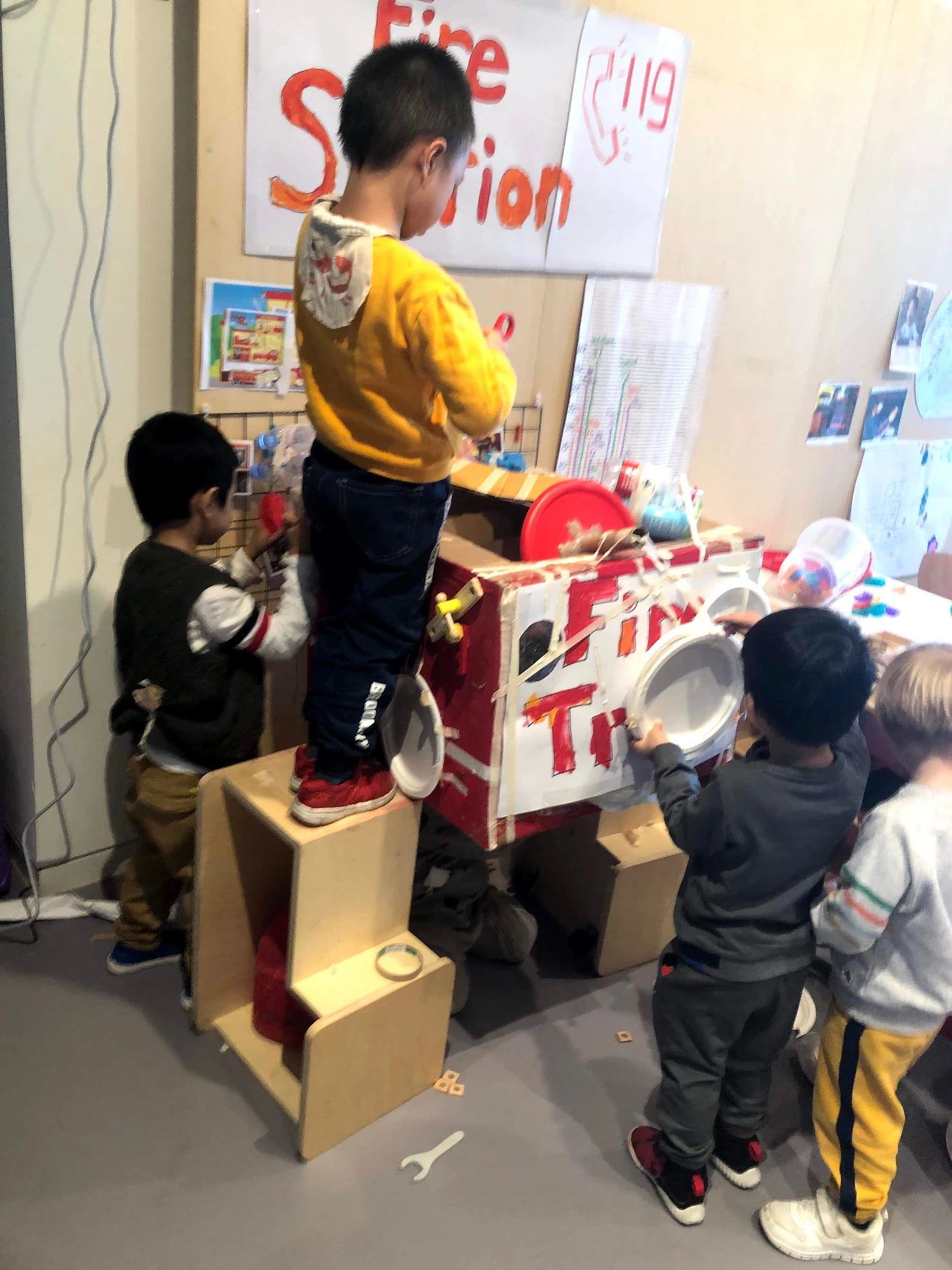





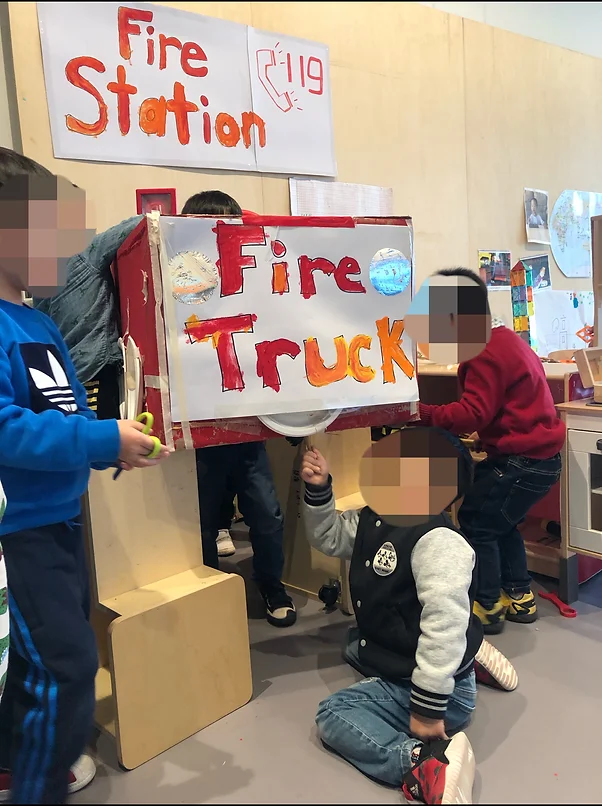
コメント